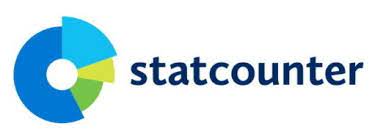Korelasi Pengetahuan Bencana Banjir Rob Dengan Tingkat Kesiapsiagaan Masyarakat Pesisir Pantai
DOI:
https://doi.org/10.36709/jppg.v7i4.69Keywords:
Disaster Knowledge, Rob Flood, PreparednessAbstract
Muara Gembong coastal topography is classified as a sloping topography, which allows water from the Java Sea to more easily enter the mainland when sea level rises. As a result of the tidal flood, it is very important to know the level of community knowledge about preparedness attitudes so that if there is a tidal flood, the community is more ready to save themselves. The purpose of this study was to determine the relationship between the level of knowledge and the coastal community's tidal flood preparedness in the subdistrict of Muara Gembong, Bekasi Regency, West Java. The approach used is cross sectional, which is measuring data only at one time, but that does not mean that the measurements are only carried out on the same day or time, but that the variables are measured only once, so there is no follow-up on the variables studied. The sampling technique used in this research is purposive sampling with a total sample of 121 respondents. There are 48 respondents who have a good level of knowledge have a good level of preparedness, while 20 respondents with a low level of knowledge have a low level of preparedness. Knowledge is the main factor of tidal disaster preparedness. The results of the relationship between knowledge and preparedness for tidal floods have a value of p = 0.000 (p<0.05) so that there is a relationship between knowledge and preparedness for tidal floods, besides that it can be said that if the level of knowledge is good, the level of disaster preparedness is also good.
References
Badan Nasional Penanggulangan Bencana (BNPB). Peraturan Kepala Badan Nasional Penanggulangan Bencana Nomor 8 Tahun 2011 Tentang Standardisasi Data Kebencanaan.
Badan Pusat Statistik Kabupaten Bekasi. (2018). Kecamatan Muara Gembong Dalam Angka.
Diposaptono S., Budiman., dan Agung, F. (2009). Menyiasati Perubahan Iklim di Wilayah Pesisir dan Pulau-Pulau Kecil. Bogor (ID): Buku Ilmiah Populer.
Hidayatullah, I., Subardjo, P., dan Satriadi, A. (2016). Pemetaan Genangan Rob di Pesisir Muaragembong Kabupaten Bekasi Dengan Menggunakan Sistem Informasi Geografis. Jurnal Oseanografi, 5(3), p.359- 367.
ISDR. (2007). Hyogo Framework for Action 2005-2015: Building the Resilience of Nations and Communities to Disasters. Genewa: UN/ISDR (United Nations/International Strategy for Disaster Reduction).
Kondoatie, R. J., dan Sjarief, R. (2006). Pengelolaan Bencana Terpadu Banjir, Longsor, Kekeringan dan Tsunami. Jakarta.
Marfai, M. A., dan King, L. (2008). Coastal Flood Management in Semarang. Indonesia Environtmental Geology. 10.1007-1103, hal 1507-1518.
Republik Indonesia. 2007. Undang-Undang Nomor 27 Tahun 2007 tentang Pengelolaan Wilayah Pesisir dan Pulau-Pulau Kecil. Jakarta.
Widarjoto, P., Budiarto, A., dan Triutomo, S. (2019). Pengetahuan Dan Kesiapsiagaan Masyarakat Miskin Dalam Menghadapi Banjir ROB di Kecamatan Penjaringan Jakarta Utara. Jurnal Managemen Bencana (JMB) 5(1): 217-4462.
Yoga A. G. H., Marfai, M., dan Hizbaron. (2008). A Identification of element at risk due to tidal flood hazard in Genuk Sub-District coastal area, IOP Conference Series: Earth and Environmental Science, 2020, DOI: 10.1088/1755-315/451/1/012008.
Zurdian. (2016). Banjir Rob: Potensi Kerentanan Lingkungan Serta Penanggulangannya. Al-Ard: Jurnal Teknik Lingkungan, 1(2), p. 58- 66.
Downloads
Published
How to Cite
Issue
Section
License
Copyright (c) 2022 Jurnal Penelitian Pendidikan Geografi

This work is licensed under a Creative Commons Attribution-NonCommercial 4.0 International License.






